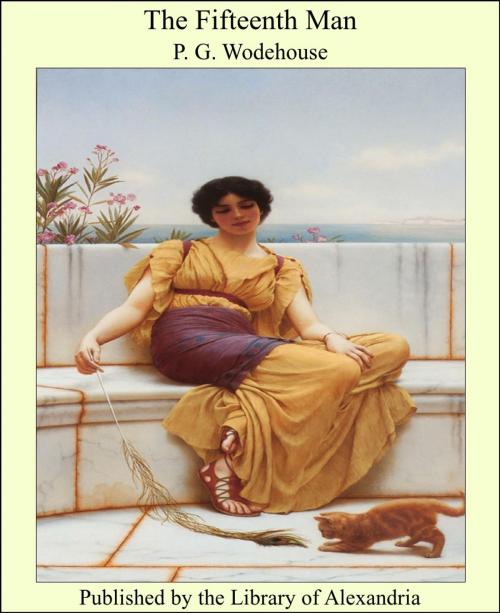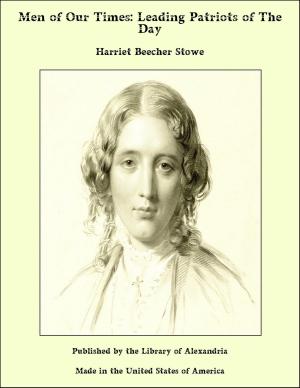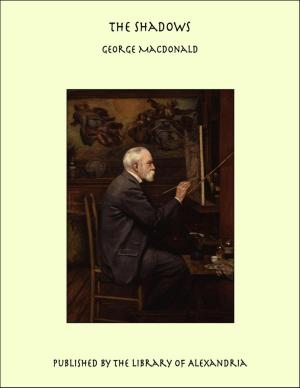| Author: | Sir Pelham Grenville Wodehouse | ISBN: | 9781465540249 |
| Publisher: | Library of Alexandria | Publication: | March 8, 2015 |
| Imprint: | Language: | English |
| Author: | Sir Pelham Grenville Wodehouse |
| ISBN: | 9781465540249 |
| Publisher: | Library of Alexandria |
| Publication: | March 8, 2015 |
| Imprint: | |
| Language: | English |
The discovery of a Gallo-Roman inscription, figured in the Revue Savoisienne of 15th November, 1867, and republished by M. Adolphe Pictet in the Revue Archéologique for July, 1868, forms the subject of one of those essays from the pen of the veteran philologist for which the students of Celtic languages and archæology cannot be sufficiently thankful. 2 The inscription, the initial letter of which has been destroyed by an injury to the stone on which it is cut, reads: athuboduæ Aug[ustæ] Servilia Terenta [votum] s[olvit]l[ibens] m[erito]. M. Pictet’s essay is entitled “Sur une Déese Gauloise de la Guerre”; and if he is right in his suggestion (which is very probably) that the letter destroyed was a c, and that ATHUBODVÆ should be read CATHUBODVÆ, the title is not inappropriate; and in the CATHUBODVÆ of the inscription we may recognise the badb-catha of Irish mythology. The etymology of the name athubodua, or cathubodua, as we may venture to read it, has been examined with great industry by M. Pictet, who has managed to compress within the narrow limits of his essay a great mass of illustrative facts and evidences drawn from all the sources accessible to him. The first member of the name (cathu, = Irish cath, «pugna») presents but little difficulty to a Celtic scholar like M. Pictet, who would however prefer finding it written catu, without aspiration, as more nearly approaching the rigid orthography of Gaulish names, in which it is very frequently found as the first element; but the second member, bodua, although entering largely into the composition of names amongst all the nations of Celtic origin from the Danube to the islands of Aran, is confessedly capable of explanation only through the medium of the Irish, with its corresponding forms of bodb or badb (pron. bov or bav), originally signifying rage, fury, or violence and ultimately implying a witch, fairy, or goddess, represented by the bird known as the scare-crow, scaldcrow, or Royston-crow, not the raven as M. Pictet seems to think
The discovery of a Gallo-Roman inscription, figured in the Revue Savoisienne of 15th November, 1867, and republished by M. Adolphe Pictet in the Revue Archéologique for July, 1868, forms the subject of one of those essays from the pen of the veteran philologist for which the students of Celtic languages and archæology cannot be sufficiently thankful. 2 The inscription, the initial letter of which has been destroyed by an injury to the stone on which it is cut, reads: athuboduæ Aug[ustæ] Servilia Terenta [votum] s[olvit]l[ibens] m[erito]. M. Pictet’s essay is entitled “Sur une Déese Gauloise de la Guerre”; and if he is right in his suggestion (which is very probably) that the letter destroyed was a c, and that ATHUBODVÆ should be read CATHUBODVÆ, the title is not inappropriate; and in the CATHUBODVÆ of the inscription we may recognise the badb-catha of Irish mythology. The etymology of the name athubodua, or cathubodua, as we may venture to read it, has been examined with great industry by M. Pictet, who has managed to compress within the narrow limits of his essay a great mass of illustrative facts and evidences drawn from all the sources accessible to him. The first member of the name (cathu, = Irish cath, «pugna») presents but little difficulty to a Celtic scholar like M. Pictet, who would however prefer finding it written catu, without aspiration, as more nearly approaching the rigid orthography of Gaulish names, in which it is very frequently found as the first element; but the second member, bodua, although entering largely into the composition of names amongst all the nations of Celtic origin from the Danube to the islands of Aran, is confessedly capable of explanation only through the medium of the Irish, with its corresponding forms of bodb or badb (pron. bov or bav), originally signifying rage, fury, or violence and ultimately implying a witch, fairy, or goddess, represented by the bird known as the scare-crow, scaldcrow, or Royston-crow, not the raven as M. Pictet seems to think















